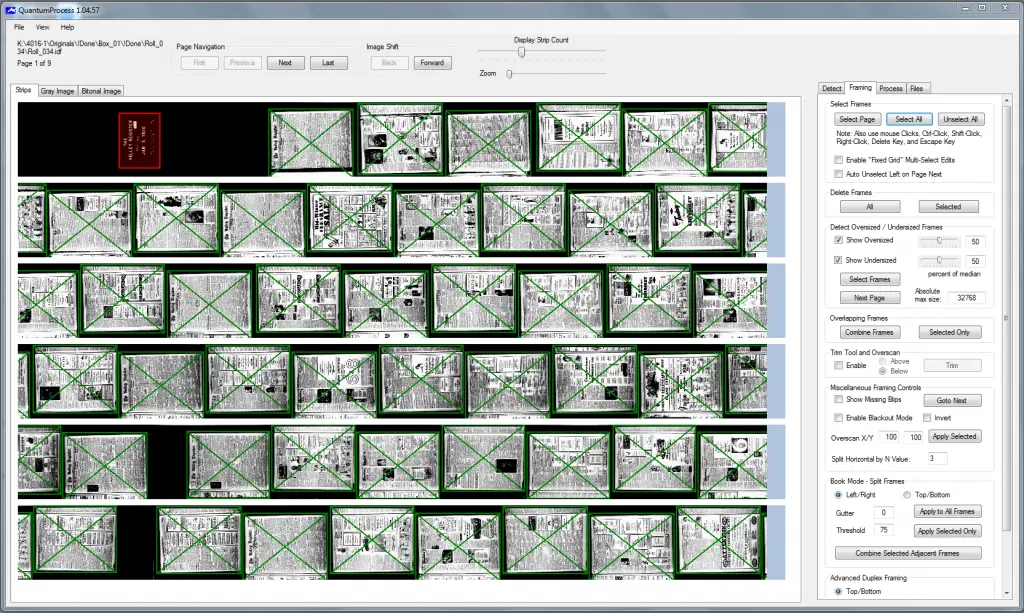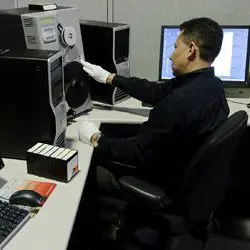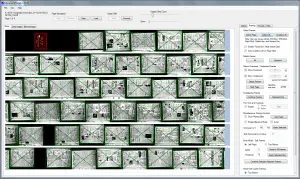Crowley Imaging and Quantum Processing: The Hybrid Approach

If you have a collection of microfilm or microfiche which needs to be digitized, then you’re probably familiar with the standard options: purchase a scanner and perform the digitization in-house or outsource the project by sending the film or fiche to a conversion service bureau, like Crowley Imaging. What many don’t know is that there is a third option, available exclusively through The Crowley Company, which we call the hybrid approach.

What is the Hybrid Approach?
The hybrid approach consists of two steps:
1) Your microfilm or microfiche is delivered to Crowley Imaging to be digitized by service bureau professionals using Mekel Technology MACH-series production microform scanners.
2) The unprocessed digital images are returned to you (via a predetermined method of transfer) along with the original material, and your in-house staff processes the images using Mekel’s proprietary QuantumProcess software downloaded on a standard PC. Quantum software licenses can be purchased on a yearly basis or rented for a period of time specified by the client.
Quantum software is custom designed for use with Mekel Technology scanners. The first part of the Quantum software solution, QuantumScan, is utilized in Crowley Imaging’s service bureau for capture of the images. In the second step of the hybrid approach, you are simply performing the final steps of the conversion procedure using QuantumProcess that would otherwise have been completed by Crowley Imaging staff.

What are the Benefits?
- The hybrid approach requires significantly less labor on the part of the client than would be necessary if a scanner were purchased to perform the digitization in-house
- The hybrid approach can be much more cost-effective than outsourcing the entire project
- The hybrid approach allows for significant control by the client over image enhancement, quality assurance (QA), processing and final image output
- The hybrid approach allows users to return to the unprocessed digital images for re-processing and re-formatting if necessary
- The hybrid approach requires less labor on the part of our service bureau, resulting in client savings. This cost savings could be allocated towards the purchase or rental of a QuantumProcess software license and the cost of labor to process the images in-house. Any funds remaining would be the total amount saved by choosing the hybrid approach over outsourcing the entire digitization project.
Example:
If a client has 10 rolls of 16mm microfilm with 2,500 images per roll (25,000 images total), the cost to scan might be:
| Scanning only (using QuantumScan) |
Scanning and basic processing* (using QuantumScan and QuantumProcess) |
Scanning and standard processing** (using QuantumScan and QuantumProcess) |
| 25,000 images | 25,000 images | 25,000 images |
| x .004 cents/image | x .02 cents/image | x .04 cents/image |
| = $100 | = $500 | = $1,000 |
| Without processing included = a 80-90% cost saving | ||
Prices stated above are used for illustration purposes only and should not be considered a quote for imaging services. Digitization pricing varies greatly depending on the volume, condition and required specifications of a collection. For more information, get a quote on imaging services.
Where do I Start?
Weigh all your options. Get quotes on the appropriate scanning equipment, imaging services and hybrid approach. The cost of a project varies greatly depending on the collection’s volume, condition and specific scanning requirements. You may decide to take the workload off your own shoulders and let Crowley Imaging do all the work. Or, you may decide that you want total control over the process and decide to purchase a scanner. If you are undecided and would like a third option, consider the hybrid approach as a valuable alternative.
* For the purposes of this example, “basic processing” includes creating one file directory per roll with sequentially numbered images.
** For the purposes of this example, “standard processing” includes creating one file directory per roll with images indexed to a five-character field.
Editor’s Note
For more information on the benefits of using Quantum software, read the Mekel Technology White Paper (specifically, the section on The Quantum Difference).
Author

